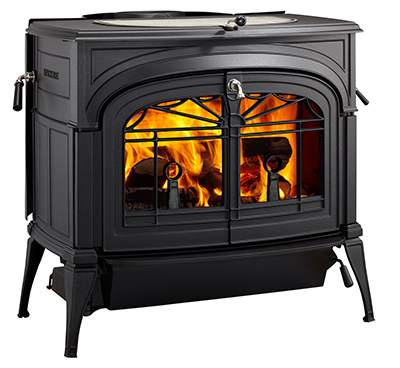Efficiency, Emissions, and Factors to Consider
Introduction
Understanding the differences between catalytic and non-catalytic woodstoves is crucial when it comes to combustion efficiency and making informed decisions for heating effectiveness and environmental considerations. Choosing the right woodstove can significantly impact energy efficiency and minimize harmful emissions. This article will provide an overview of catalytic and non-catalytic woodstoves, compare their mechanisms, efficiency, emissions, and maintenance requirements, and offer considerations for choosing the most suitable option.
Woodstoves are a popular choice for heating homes, cabins, and other spaces, especially in areas where electricity or gas heating may not be readily available or affordable. Catalytic and non-catalytic woodstoves are both effective options for heating, but they utilize different technologies to achieve combustion. By understanding the differences between these two types of woodstoves, individuals can make an informed decision based on their specific needs and preferences.
Catalytic Woodstoves
Catalytic woodstoves utilize a catalyst, typically a ceramic honeycomb coated with a metal catalyst such as platinum or palladium, to facilitate combustion. The presence of the catalyst lowers the ignition temperature of gases, leading to more complete combustion and increased heat output. This means that catalytic woodstoves are more efficient at converting the energy in the wood into heat, resulting in higher overall efficiency.
Additionally, catalytic woodstoves can effectively reduce emissions of particulate matter, carbon monoxide, and other harmful gases. The catalyst helps to burn off these pollutants, resulting in cleaner combustion and improved air quality. This makes catalytic woodstoves a favorable option for individuals who are concerned about the environmental impact of wood heating.
However, it is essential to note that catalytic woodstoves require regular maintenance to maintain optimal performance. The catalyst in the woodstove needs to be cleaned and replaced periodically to ensure proper functioning. This can add to the overall cost of owning a catalytic woodstove. Additionally, catalytic woodstoves tend to have a higher initial cost due to the additional technology involved. These factors should be taken into consideration when deciding between catalytic and non-catalytic woodstoves.
Non-Catalytic Woodstoves
Non-catalytic woodstoves, on the other hand, rely on secondary combustion and preheated air to achieve efficient combustion. These woodstoves are generally simpler in design and operation, requiring less maintenance than catalytic woodstoves. Non-catalytic woodstoves achieve efficient combustion by introducing preheated air into the firebox, which helps to burn off gases and particles.
One of the advantages of non-catalytic woodstoves is their cost-effectiveness upfront. These woodstoves tend to have a lower initial cost compared to catalytic woodstoves, making them a more affordable option for individuals on a budget. Non-catalytic woodstoves also have user-friendly controls for adjusting the burn rate, allowing for easy operation and temperature control. This makes them a popular choice for individuals who are new to wood heating or prefer a simpler heating solution.
While non-catalytic woodstoves may produce slightly higher emissions than catalytic ones, modern designs incorporate features to minimize emissions and meet regulatory standards when operated correctly. This means that individuals can still enjoy the benefits of wood heating while minimizing their environmental impact. It is important to follow proper operating procedures and ensure regular maintenance to ensure optimal performance and minimize emissions.
In conclusion, both catalytic and non-catalytic woodstoves are effective options for heating. Catalytic woodstoves offer higher efficiency and lower emissions, but they require regular maintenance and have a higher upfront cost. Non-catalytic woodstoves are simpler to use and more cost-effective upfront, but they may produce slightly higher emissions. Factors such as cost, maintenance requirements, and personal preferences should be considered when choosing the most suitable woodstove. By making an informed decision, individuals can enjoy the benefits of wood heating while minimizing their environmental impact.


/1003/site-assets/logo.png)


